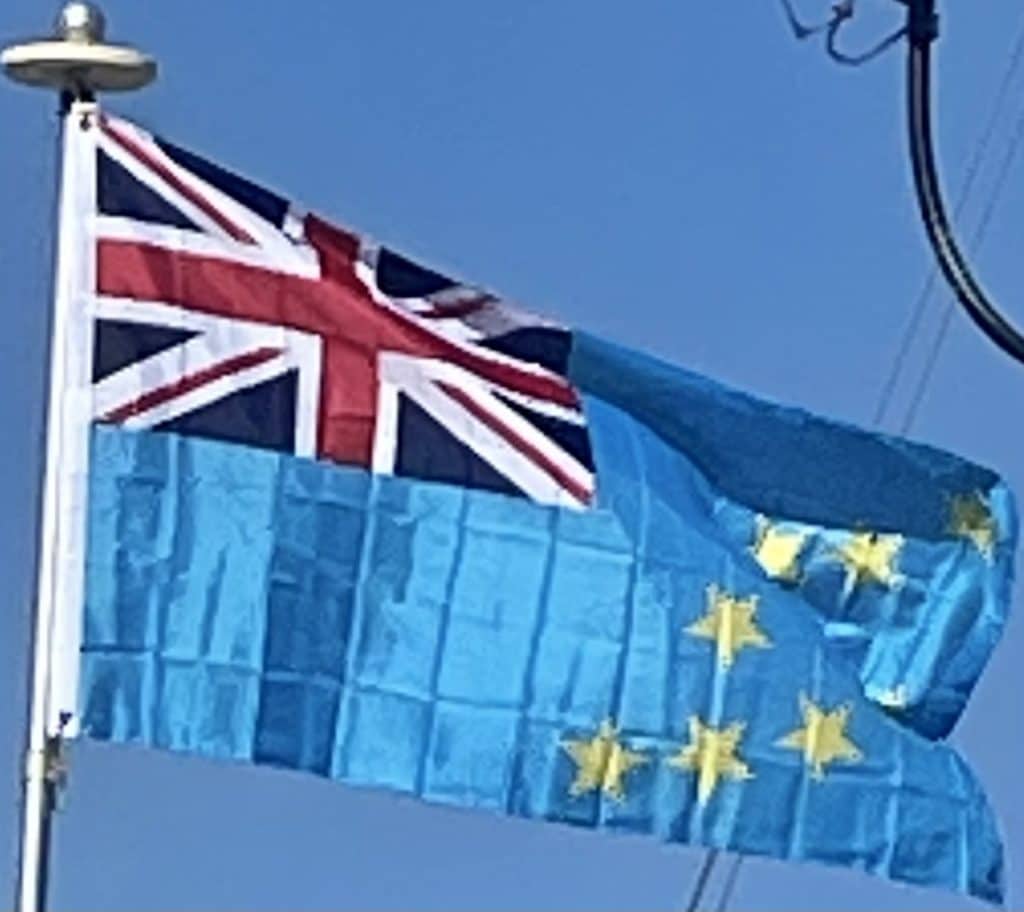
Christianity came to Tuvalu in 1861 when Elekana, a deacon of a Congregational church in Manihiki, Cook Islands, became caught in a storm and drifted for eight weeks before landing at Nukulaelae on 10 May 1861. Elekana began preaching Christianity. He was trained at Malua Theological College, a London Missionary Society (LMS) school in Samoa, before beginning his work in establishing the Church of Tuvalu.
In 1865, the Rev. A. W. Murray of the LMS, a Protestant congregationalist missionary society, arrived as the first European missionary; he also evangelized among the inhabitants of Tuvalu. By 1878 Protestantism was considered well established, as there were preachers on each island. In the later 19th and early 20th centuries, the ministers of what became the Church of Tuvalu (Te Ekalesia Kelisiano Tuvalu) were predominantly Samoans, who influenced the development of the Tuvaluan language and the music of Tuvalu.
The islands came into Britain’s sphere of influence in the late 19th century, when each of the Ellice Islands was declared a British protectorate by Captain Gibson of HMS Curacoa, between 9 and 16 October 1892.
Trading Firms and Traders:
Trading companies became active in Tuvalu in the mid-19th century; the trading companies engaged palagi traders who lived on the islands. John (also known as Jack) O’Brien was the first European to settle in Tuvalu; he became a trader on Funafuti in the 1850s. He married Salai, the daughter of the paramount chief of Funafuti. Louis Becke, who later found success as a writer, was a trader on Nanumanga from April 1880 until the trading station was destroyed later that year in a cyclone. He then became a trader on Nukufetau.
In 1892, Captain Davis of HMS Royalist reported on trading activities and traders on each of the islands visited. Captain Davis identified the following traders in the Ellice Group: Edmund Duffy (Nanumea); Jack Buckland (Niutao); Harry Nitz (Vaitupu); Jack O’Brien (Funafuti); Alfred Restieaux and Emile Fenisot (Nukufetau); and Martin Kleis (Nui). During this time, the greatest number of palagi traders lived on the atolls, acting as agents for the trading companies. Some islands would have competing traders, while dryer islands might only have a single trader.
In the later 1890s and into first decade of the 20th century, structural changes occurred in the operation of the Pacific trading companies; they moved from a practice of having traders resident on each island to instead becoming a business operation where the supercargo (the cargo manager of a trading ship) would deal directly with the islanders when a ship visited an island. From 1900, the numbers of palagi traders in Tuvalu declined; the last of them were Fred Whibley on Niutao, Alfred Restieaux on Nukufetau, and Martin Kleis on Nui. By 1909 there were no more resident palagi traders representing the trading companies, although Whibley, Restieaux and Kleis remained in the islands until their deaths.
Scientific Expeditions and Travelers:
The United States Exploring Expedition under Charles Wilkes visited Funafuti, Nukufetau and Vaitupu in 1841. During this expedition, engraver and illustrator Alfred Thomas Agate recorded the dress and tattoo patterns of the men of Nukufetau.
In 1890, Robert Louis Stevenson, his wife Fanny Vandegrift Stevenson and her son Lloyd Osbourne sailed on the Janet Nicoll, a trading steamer owned by Henderson and Macfarlane of Auckland, New Zealand, which operated between Sydney and Auckland and into the central Pacific. The Janet Nicoll visited three of the Ellice Islands; while Fanny records that they made landfall at Funafuti, Niutao and Nanumea, Jane Resture suggests that it was more likely they landed at Nukufetau rather than Funafuti. An account of this voyage was written by Fanny Stevenson and published under the title The Cruise of the Janet Nichol, together with photographs taken by Robert Louis Stevenson and Lloyd Osbourne.

